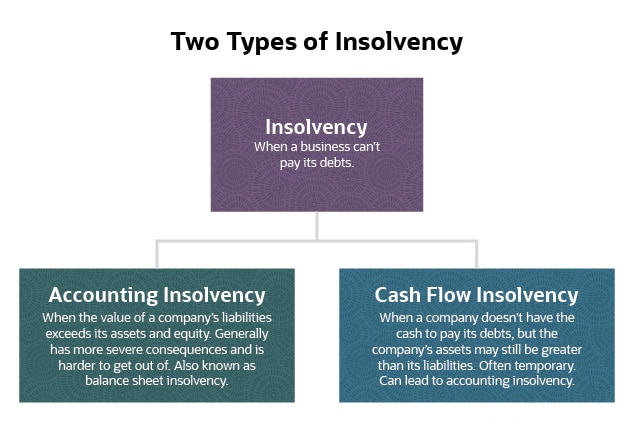Getting The Insolvency Practitioner To Work
Getting The Insolvency Practitioner To Work
Blog Article
6 Easy Facts About Insolvency Practitioner Explained
Table of ContentsGetting The Insolvency Practitioner To WorkFascination About Insolvency PractitionerInsolvency Practitioner for BeginnersInsolvency Practitioner Fundamentals ExplainedInsolvency Practitioner - The FactsInsolvency Practitioner Things To Know Before You BuyThe Main Principles Of Insolvency Practitioner
Insurance coverage is kept an eye on and controlled by state insurance coverage divisions, and among their key goals is safeguarding policyholders from the threat of a company in economic distress. When a company enters a period of economic problem and is not able to meet its commitments, the insurance policy commissioner in the firm's home state launches a processdictated by the laws of the statewhereby initiatives are made to assist the firm restore its financial footing.If it is figured out that the business can not be rehabilitated, the firm is declared insolvent, and the commissioner will certainly ask the state court to purchase the liquidation of the company. The insurance coverage commissioner, either designated by the governor or chosen, heads the state insurance policy department and displays and manages insurance policy activity within the state.

By getting control of a company, the commissioner (or the insurance policy division) is, by regulation, the rehabilitator or liquidator of the business. In this capacity, the commissioner or division takes control of the firm's procedures. Rather than do so straight, the commissioner may maintain an unique deputy receiver to supervise the firm's tasks.
Fascination About Insolvency Practitioner
The receiver oversees an accountancy of the company's assets and responsibilities and provides the estate of the company. In doing so, the receiver seeks to maximize the company's possessions, move them to cash, and afterwards distribute that money to lenders having valid insurance claims against the insurance firm in accordance with payment priorities defined by state regulation (in all states, policyholders are top priority complaintants whose claims are paid prior to those of general creditors).
All insurance provider (with minimal exceptions) accredited to sell life or wellness insurance or annuities in a state must be members of that state's warranty association. The guaranty association accepts the commissioner and the receiver in pre-liquidation preparation. When the liquidation is bought, the guaranty organization supplies insurance coverage to the firm's policyholders who are state homeowners (as much as the levels defined by state lawssee listed below; any benefit quantities over the warranty asociation benefit levels come to be insurance claims against the firm's remaining properties).
The above coverage degrees apply individually for each insolvent insurer. When an insurance provider falls short and there is a shortage of funds required to fulfill the commitments to insurance policy holders, state warranty associations are activated. Guaranty organizations have subrogation rights to a proportionate share of the properties remaining in the stopped working insurer.
A Biased View of Insolvency Practitioner
Second, insurance companies doing organization in that state are evaluated a share of the amount needed to satisfy the section of the warranty associations' covered claims not or else moneyed with estate possessions. The amount insurance firms are assessed is based on the quantity of premiums that they collect in that state. The National Organization of Life and Wellness Insurance Coverage Guaranty Organizations (NOLHGA) is made up of the life and health insurance policy guaranty associations of all 50 states and the Area of Columbia.
NOLHGA develops a job force of representative guaranty associations to collaborate with the insurance commissioner to create a plan to secure insurance policy holders. Discover More For more details on NOLHGA's function in the process, see "What Is NOLHGA?" and "The Safeguard at Job." [Back]
You are below: Insolvency is when a Check This Out business or person can not pay debts when they schedule. There are a number of choices available to a bankrupt company or person: ASIC controls companies, it does not manage individual insolvency procedures. For additional information regarding personal bankruptcy and personal bankruptcy contracts, go to the Australian Financial Protection Authority site.
Insolvency Practitioner for Beginners
Anticipating defense by assisting you pick the best clients and the appropriate markets to prevent uncollectable loan to begin with, thanks to acute economic evaluation (Insolvency Practitioner). In-depth market intelligence, supplying you with 360-degree visibility on organization markets and approaching troubles. It would be a simplification to assume a profession credit rating insurance policy starts and finishes with premiums and pay-outs
This can occur for a variety of reasons, consisting of bad financial monitoring, unexpected expenses, or a change out there. If a business is bankrupt, it might be required to shut down or market off possessions to pay creditors. This can have a significant effect on the organization, employees, and investors.
The Only Guide to Insolvency Practitioner
Why does a firm get in into bankruptcy? There check it out are a number of factors why a firm might get in into bankruptcy.

The Only Guide to Insolvency Practitioner
The company may be compelled to sell assets, lay off team or even shut down. Creditors might be left out of pocket and the company's shareholders might see their investment go away.
This can take place for a number of reasons, including bad financial monitoring, unforeseen prices, or a modification in the market. If a firm is insolvent, it might be compelled to shut down or offer off possessions to pay creditors. This can have a major impact on the company, staff members, and shareholders.
The smart Trick of Insolvency Practitioner That Nobody is Talking About
Why does a firm enter into bankruptcy? There are a number of reasons why a firm might get in into bankruptcy.
Various other factors for insolvency consist of scams, mismanagement, and unanticipated costs. When a business comes to be bankrupt, its assets are made use of to pay off its debts. This can have a major effect on the business, as it might no more have the ability to proceed running. Insolvency can likewise cause work losses and the closure of organizations.
This can have major implications for the firm, its stakeholders, lenders and the economy. The firm may be compelled to market assets, lay off team or perhaps shut down. This can have a ripple effect on the local community and the economic climate as a whole. Creditors might be omitted of pocket and the company's shareholders may see their investment vanish.
Report this page